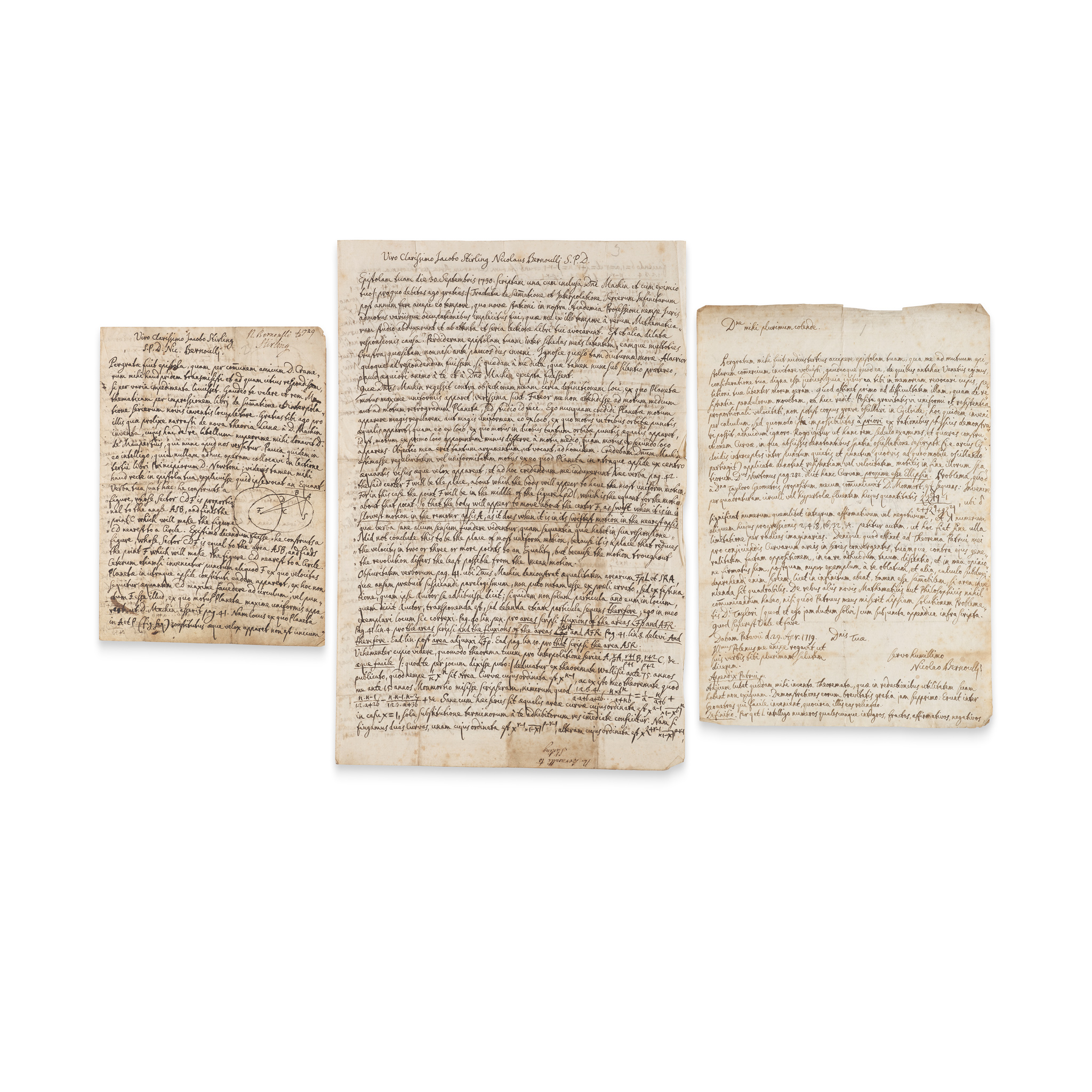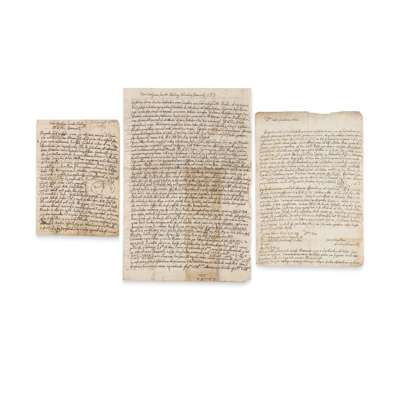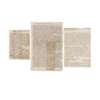
Lot 29

Bernoulli, Nicolaus (1687-1759)
Three autograph letters signed to James Stirling


The Library of James Stirling, Mathematician
Auction: 23 October 2025 from 13:00 GMT
Description
Padua, 29th April 1719. 2 pages, 29.4 x 20.5cm, addressed ‘D[omin]e mihi plurimum colende’, signed ‘Nicolas Bernoulli’, discussing the resistance of pendulums (‘Posita gravitates vi uniformi et resistentia proportionali velocitati, non potest corpus grave oscillavi in cycloide, hoc quidem inveni per calculum’, i.e. ‘Given a uniform force of gravity and a resistance proportional to the velocity, a heavy body cannot oscillate in cycloid, which I have indeed found by calculation’), asking Stirling to examine the matter (with reference to the work of Newton, Taylor and Montmort on the subject), and referring to their meeting in Venice;
Basel, 22nd October 1729. 4 pages, 22 x 15.8cm, addressed and signed at head ‘Viro clarissimo Jacobo Stirling S.P.D. Nic. Bernoulli’, with 5 diagrams, greeting Stirling’s news of the forthcoming publication of his work on the summation and interpolation of series (i.e. the Methodus differentialis) and of ‘the new theory of the moon discovered by Mr Machin’ (‘de nova theoria Lunae a D. Machin inventa’, presumably ‘The Laws of the Moon’s Motion', published in the first edition in English of Newton's Principia, 1729), proceeding to a detailed discussion of both subjects with reference to Maupertuis, Cramer, Pemberton and others, short split to centre of transverse fold;
Basel, 1st April 1733, 4 pages, 37 x 24.5cm, addressed and signed at head ‘Viro clarissimo Jacobo Stirling Nicolas Bernoulli S.P.D.’, containing detailed responses to Stirling’s Lineae tertii ordinis Neutonianae and Methodus Differentialis with reference to Taylor, de Moivre, Machin, and others.
Together with a contemporary copy of James Stirling's letter to Nicolaus Bernoulli, September, 1730, enclosing Machin's answer to Bernoulli's criticism of his treatise ('I hope it will satisfie you intirely till you shall see the book he is now preparing for the press, which I am confident will please you extremely, as it clears up the obscure parts of Newtons third Book of principles and carry the Theory of Gravity further than even Sir Isaac himself did'), lamenting the general ignorance of the third book of the Principia, then proceeding to discussions of series ('I cannot but think that one of us has misunderstood the other …'), Klingenstierna's problem of ‘a curve revolving about a point', etc. (4)
Footnote
Nicolaus Bernoulli, a member of the illustrious Bernoulli family of Basel, was appointed professor of mathematics at Padua in 1716, the chair which had been held a century before by Galileo. His relationship with James Stirling seems to date from Stirling’s time in Italy (c.1717-22), though they may have met when Bernoulli visited Oxford in 1712. Bernoulli’s letter of April 1719 is the earliest mathematical letter in the surviving correspondence of Stirling. The letter of 1733 contains ‘a number of valuable criticisms’ of Stirling’s Lineae tertii ordinis Neutonianae (1717) and the Methodus differentialis (1730), including Bernoulli’s discovery of a ‘a new variety of cubic omitted by both Newton and Stirling in their enumeration of cubic curves’ (Tweedie, pp. 207-8).
Published: Charles Tweedie, James Stirling: A Sketch of his Life and Works along with his Scientific Correspondence, 1922, pp. 131-150.

